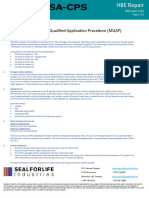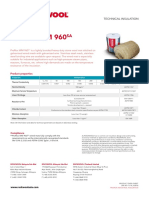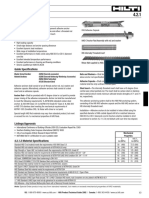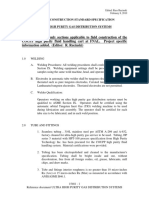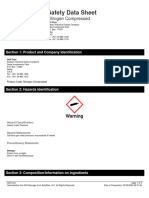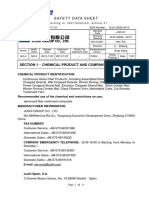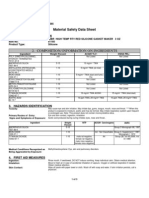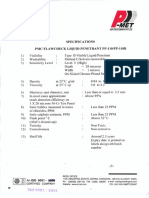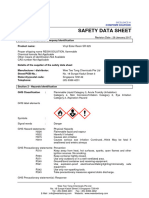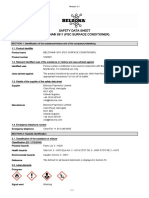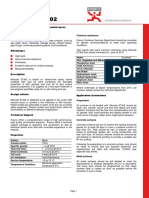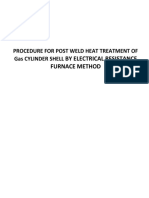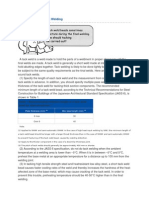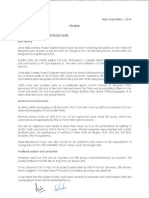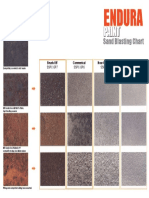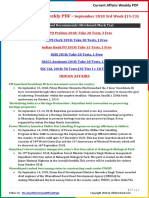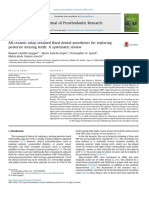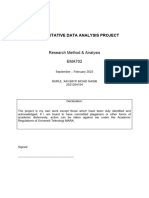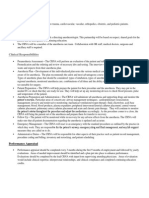0% found this document useful (0 votes)
1K views11 pagesEsab Safety Data Sheet
This safety data sheet provides information on the product OK 48.00. It lists the product identifier, relevant uses, supplier details, emergency contact information, and hazards. The main components are listed, including iron, limestone, fluorides, silicates, titanium oxide, manganese, quartz, silicon, and aluminum silicate. First aid measures are outlined for electric shock, inhalation, skin contact, and eye contact. Firefighting instructions note welding arcs can ignite combustibles, and self-contained breathing apparatus is advised for firefighters.
Uploaded by
thomasCopyright
© © All Rights Reserved
We take content rights seriously. If you suspect this is your content, claim it here.
Available Formats
Download as PDF, TXT or read online on Scribd
0% found this document useful (0 votes)
1K views11 pagesEsab Safety Data Sheet
This safety data sheet provides information on the product OK 48.00. It lists the product identifier, relevant uses, supplier details, emergency contact information, and hazards. The main components are listed, including iron, limestone, fluorides, silicates, titanium oxide, manganese, quartz, silicon, and aluminum silicate. First aid measures are outlined for electric shock, inhalation, skin contact, and eye contact. Firefighting instructions note welding arcs can ignite combustibles, and self-contained breathing apparatus is advised for firefighters.
Uploaded by
thomasCopyright
© © All Rights Reserved
We take content rights seriously. If you suspect this is your content, claim it here.
Available Formats
Download as PDF, TXT or read online on Scribd
/ 11
